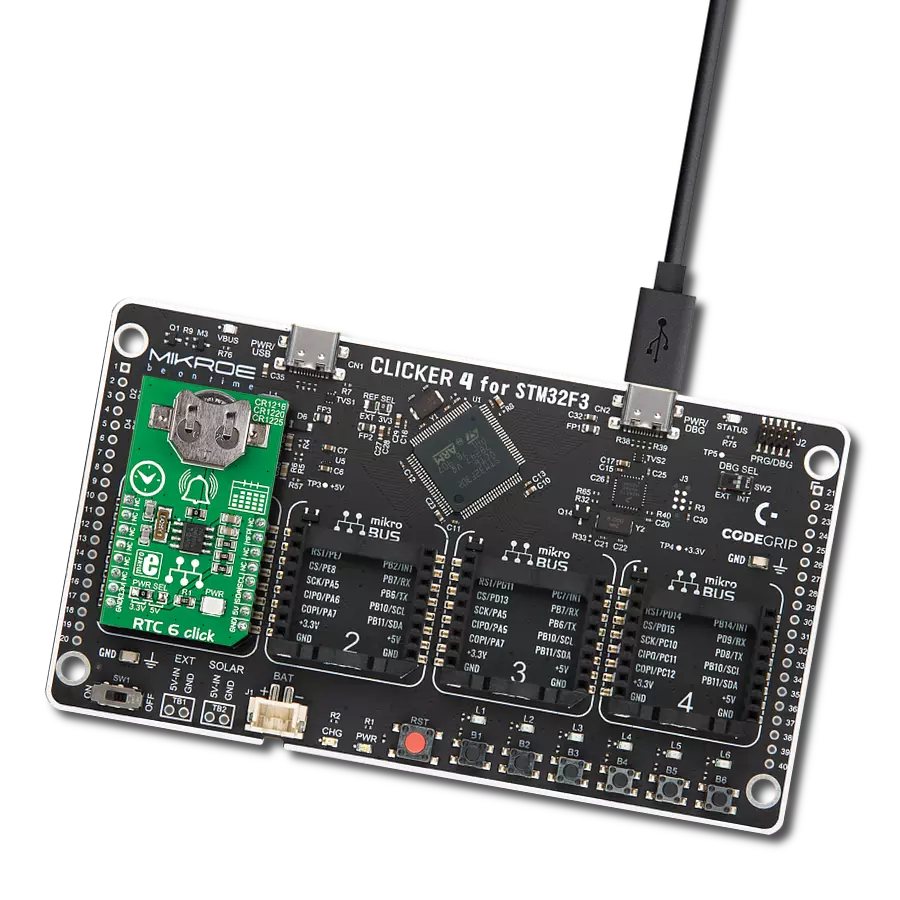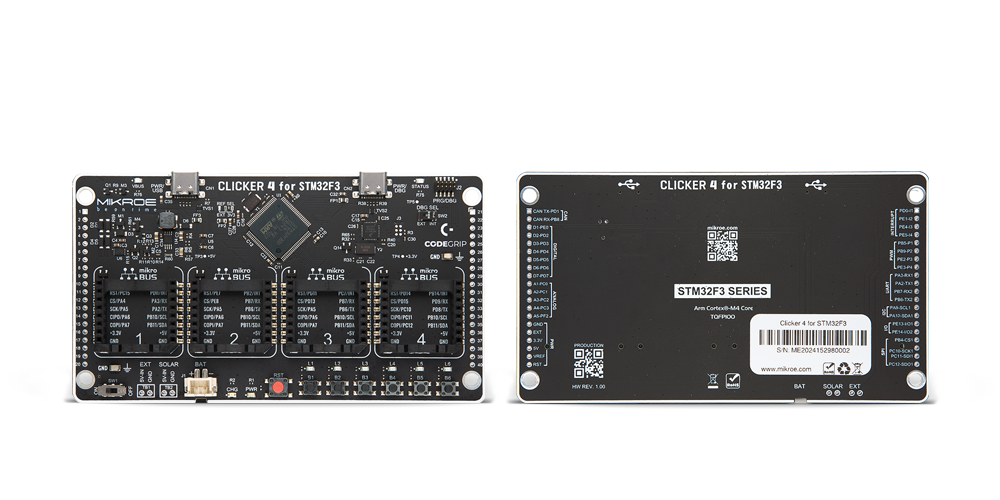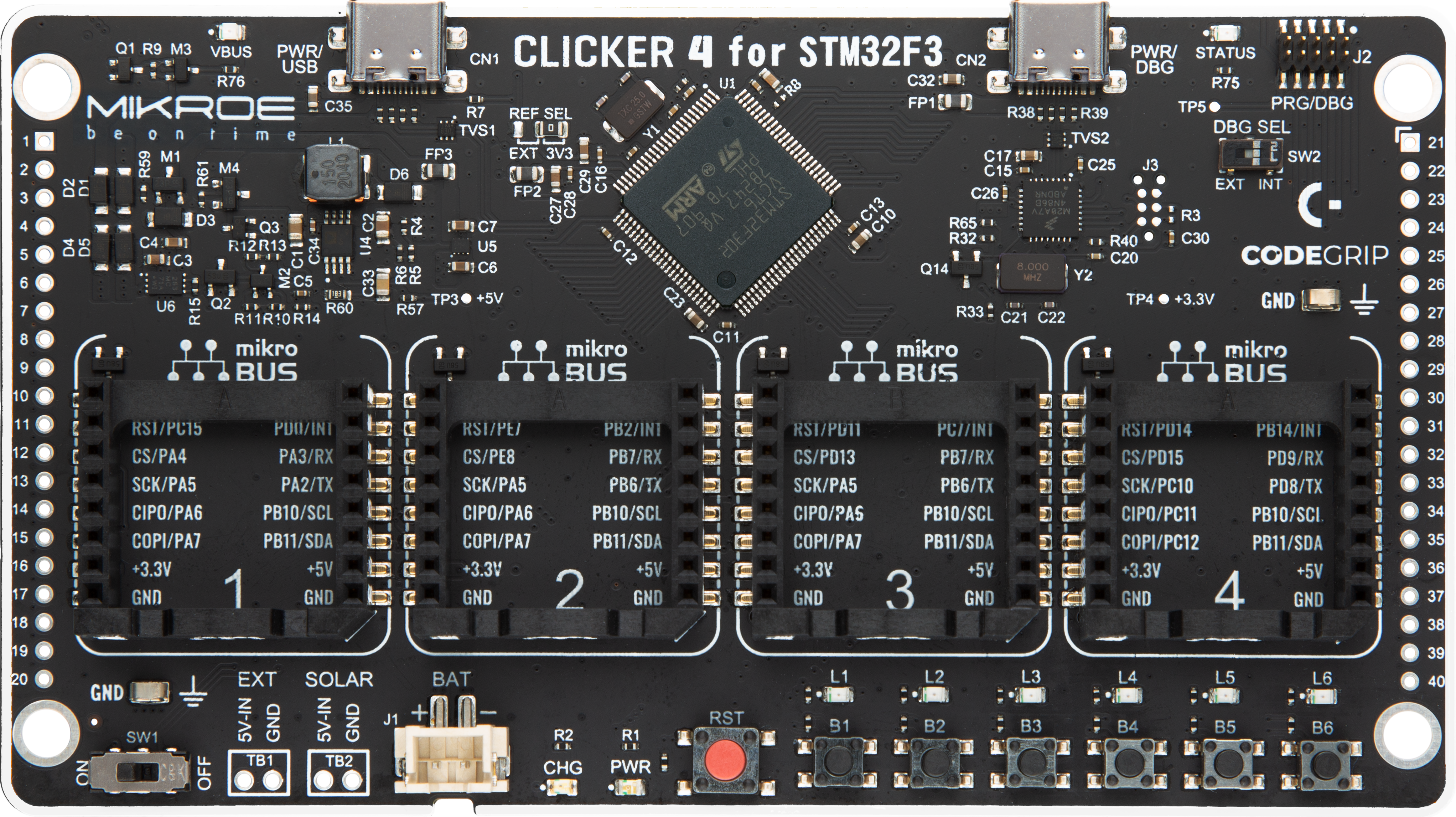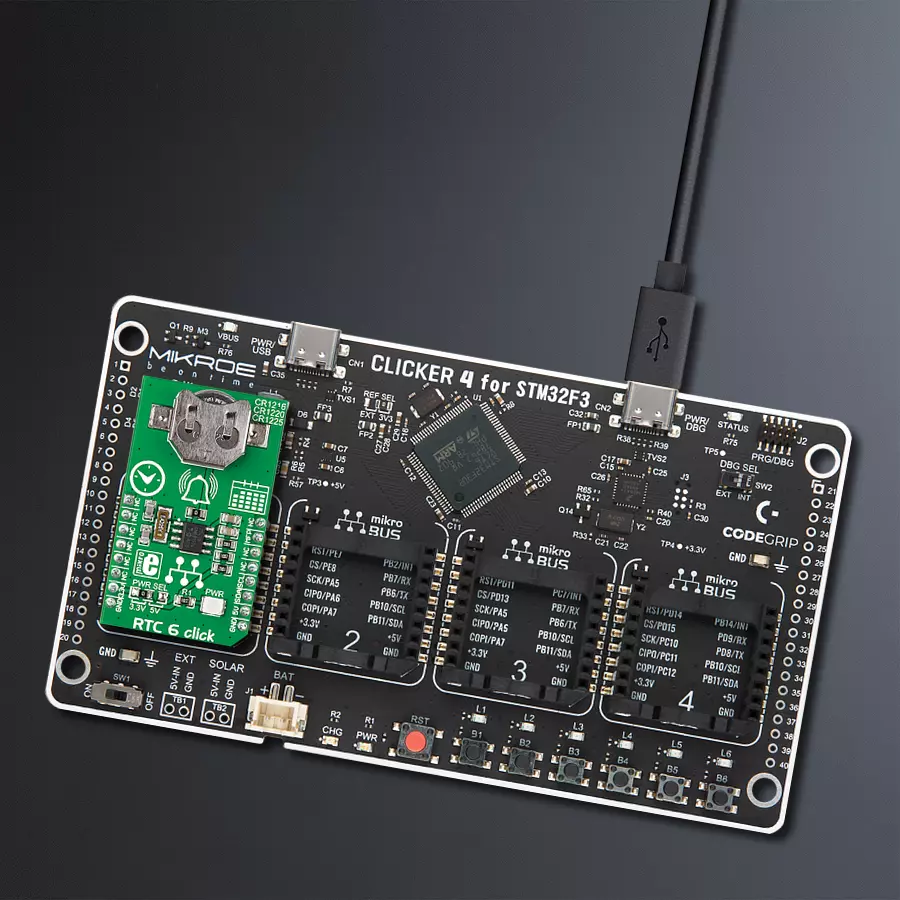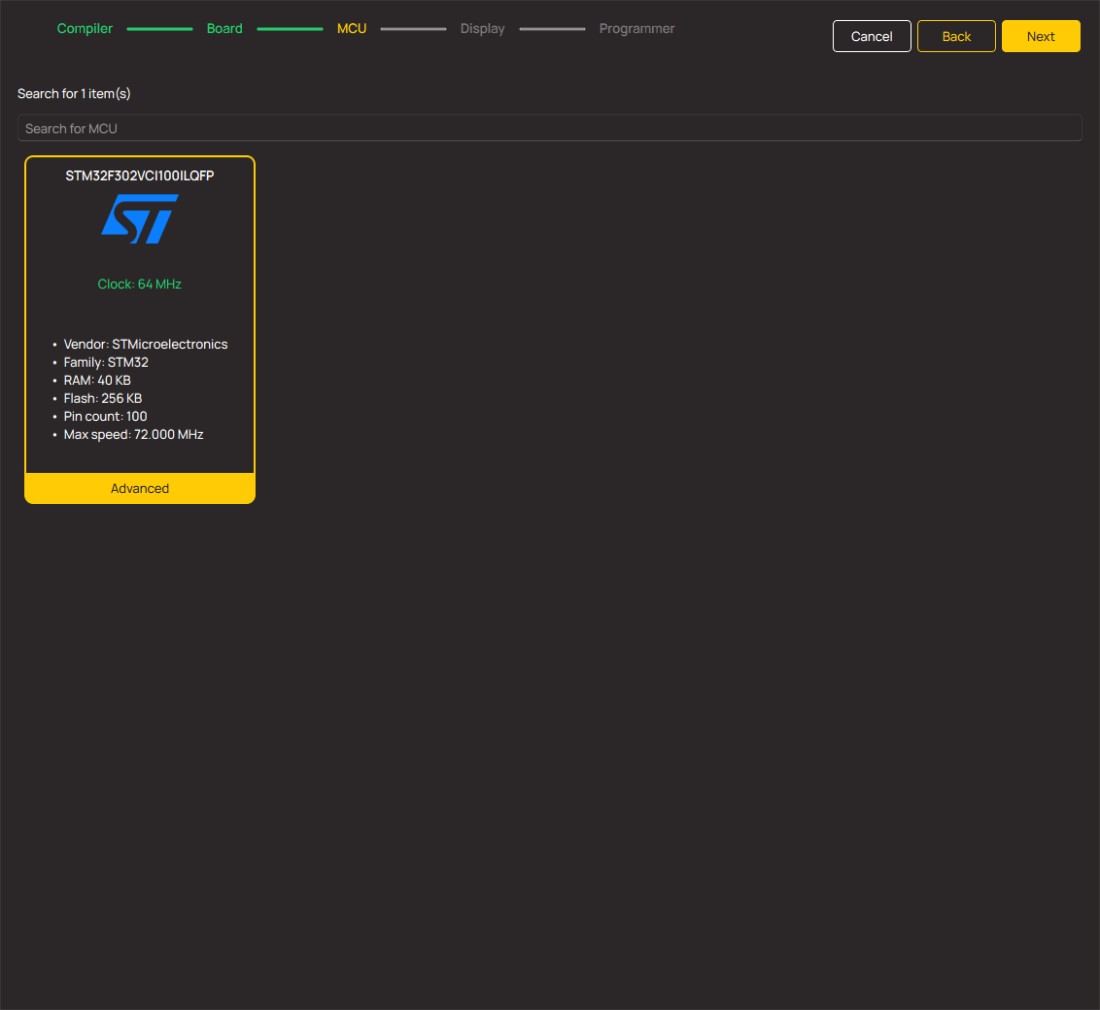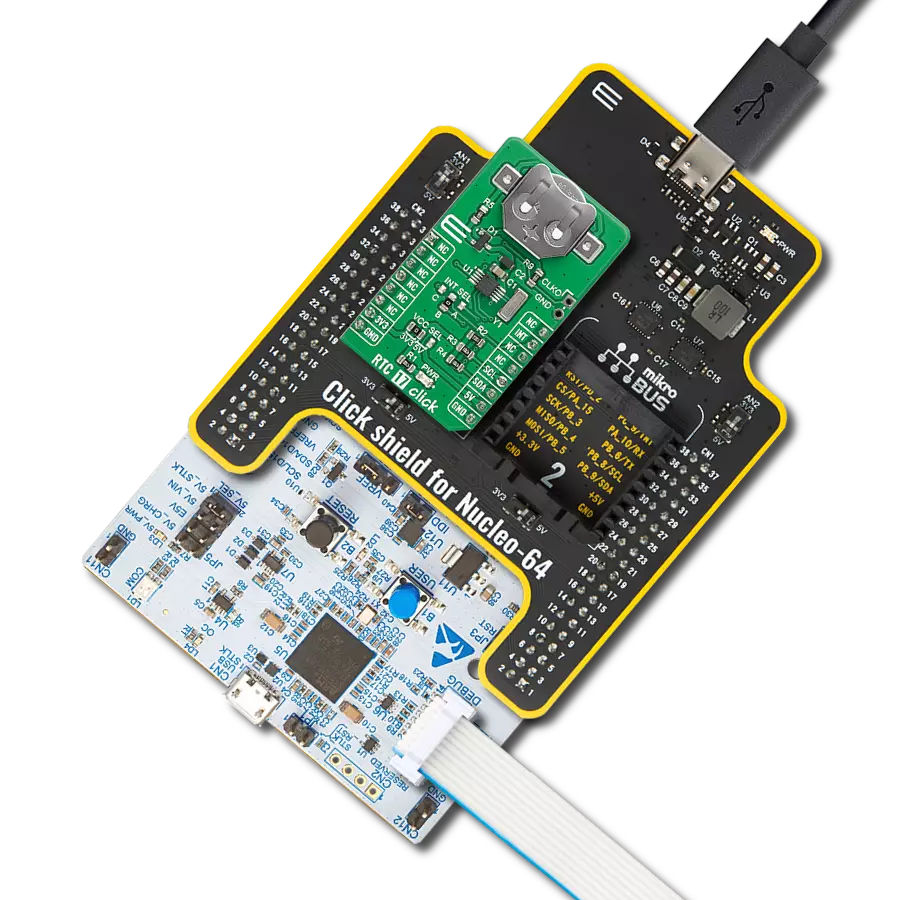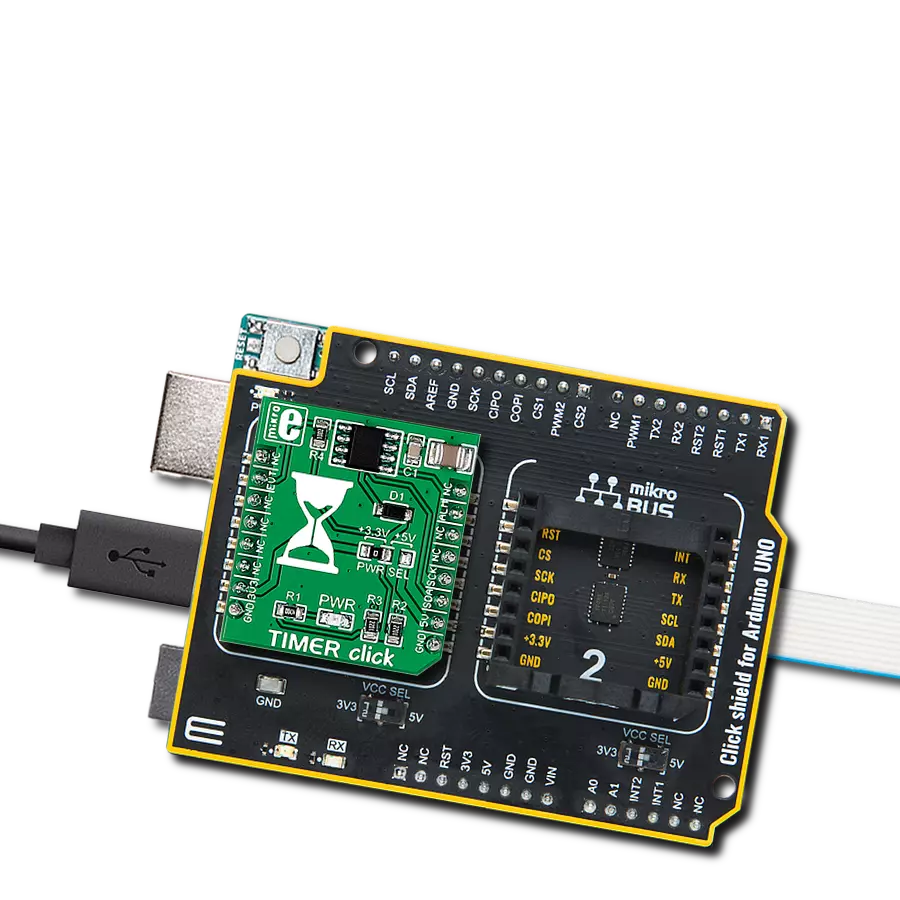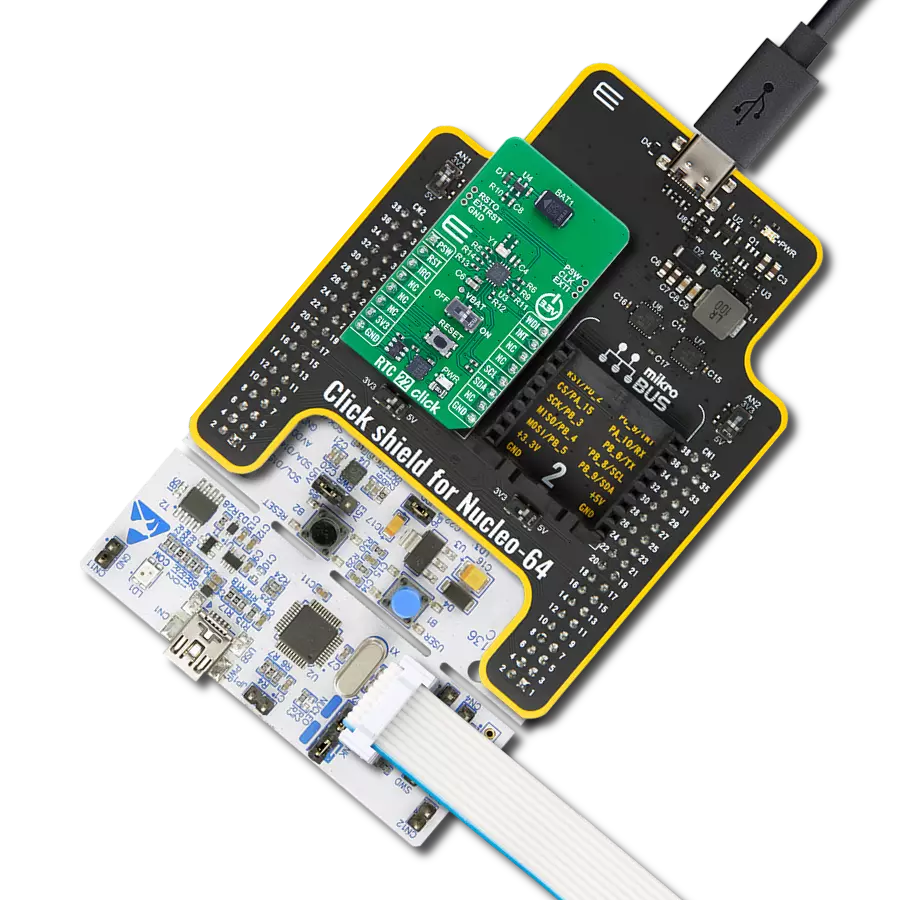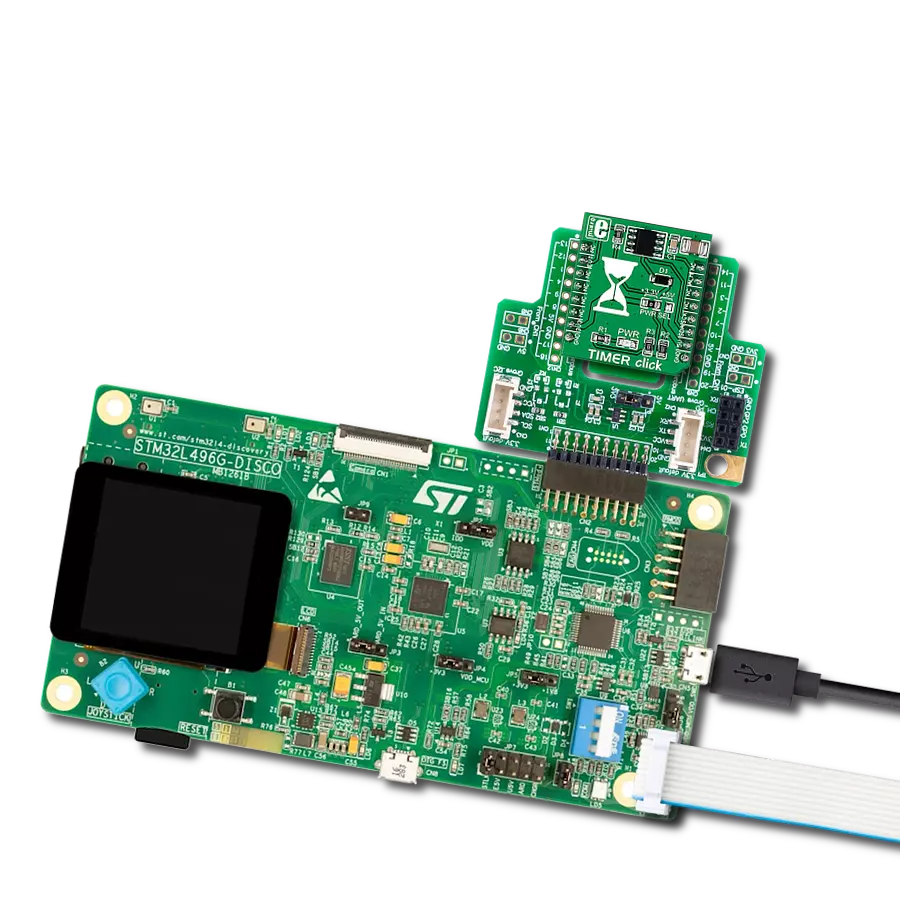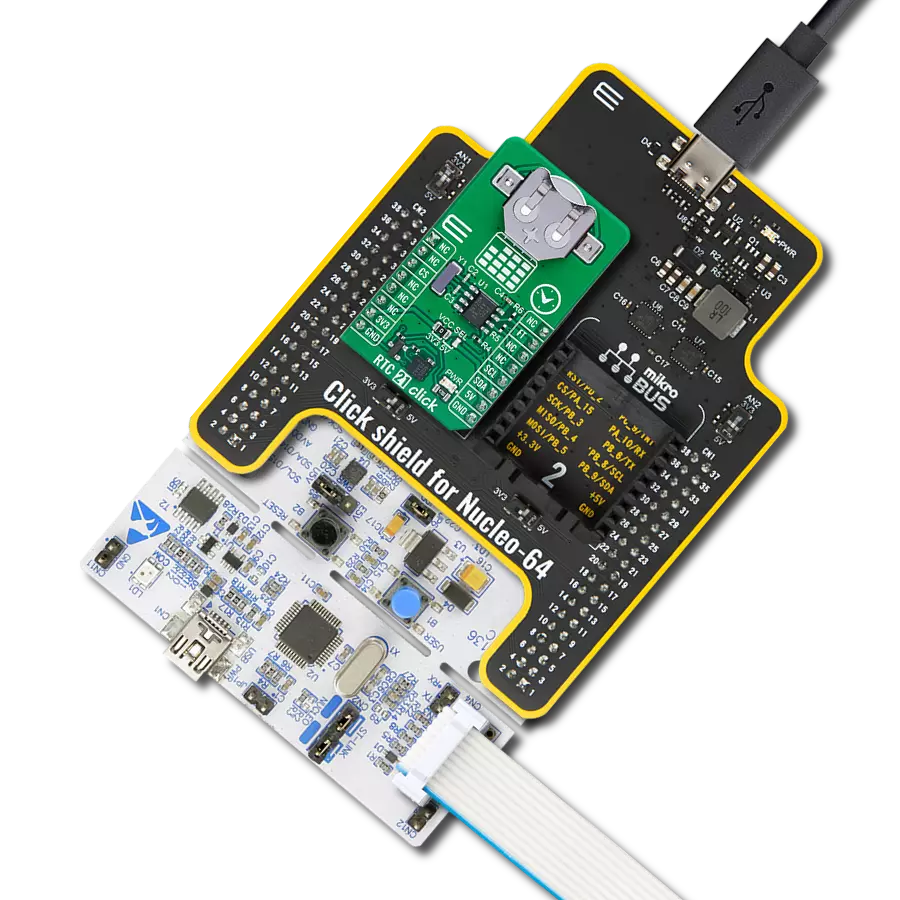Take control of time synchronization in your projects with advanced real-time clock, delivering reliable and precise timing accuracy
A
A
Hardware Overview
How does it work?
RTC 6 Click is based on the MCP79411, a battery-backed I2C real-time clock/calendar with SRAM, and protected EEPROM from Microchip. The alarms on this RTC 6 Click can be configured on all counters up to and including months. The clock frequency is delivered from an onboard 32.768KHz crystal oscillator. On-chip digital trimming with ±1 ppm resolution and ±129 ppm range can be used to adjust for frequency variance caused by crystal tolerance and temperature. For backup power for the RTC, this Click board™ features the coin-cell Lithium battery holder that supports CR1216, CR1220, and CR1225 battery formats. By removing the 0ohm resistor, you can turn off battery backup. For storing data, the MCP79411 has 64 bytes of battery-backed SRAM that correlate with the
timekeeping circuit and allow the device to maintain accurate time and date when main power is lost. The time between power switches, from backup to primary power and vice versa, is restored is recorded by the power outage time stamp. The MCP79411 features 1Kbit of internal nonvolatile EEPROM with software write protectable regions. An additional 64 bits of protected nonvolatile memory is only writable after an unlock sequence, making it ideal for storing a unique ID or other critical information. The RTC 6 Click uses an I2C interface for communication with the host MCU, with a clock rate of up to 400kHz. This Click board™ also features a multifunction pin, accessible over the MFP pin of the mikroBUS™ socket. The
multifunctional output on this pin can be configured to assert an alarm match to output a selectable frequency square wave or as a general-purpose output. The MCP79411 features two independent alarms. Each alarm can generate either an interrupt at a specific time in the future or a periodic interrupt every minute, hour, day, day of week, or month. This Click board™ can operate with either 3.3V or 5V logic voltage levels selected via the PWR SEL jumper. This way, both 3.3V and 5V capable MCUs can use the communication lines properly. Also, this Click board™ comes equipped with a library containing easy-to-use functions and an example code that can be used as a reference for further development.
Features overview
Development board
Clicker 4 for STM32F3 is a compact development board designed as a complete solution, you can use it to quickly build your own gadgets with unique functionalities. Featuring a STM32F302VCT6, four mikroBUS™ sockets for Click boards™ connectivity, power managment, and more, it represents a perfect solution for the rapid development of many different types of applications. At its core, there is a STM32F302VCT6 MCU, a powerful microcontroller by STMicroelectronics, based on the high-
performance Arm® Cortex®-M4 32-bit processor core operating at up to 168 MHz frequency. It provides sufficient processing power for the most demanding tasks, allowing Clicker 4 to adapt to any specific application requirements. Besides two 1x20 pin headers, four improved mikroBUS™ sockets represent the most distinctive connectivity feature, allowing access to a huge base of Click boards™, growing on a daily basis. Each section of Clicker 4 is clearly marked, offering an intuitive and clean interface. This makes working with the development
board much simpler and thus, faster. The usability of Clicker 4 doesn’t end with its ability to accelerate the prototyping and application development stages: it is designed as a complete solution which can be implemented directly into any project, with no additional hardware modifications required. Four mounting holes [4.2mm/0.165”] at all four corners allow simple installation by using mounting screws. For most applications, a nice stylish casing is all that is needed to turn the Clicker 4 development board into a fully functional, custom design.
Microcontroller Overview
MCU Card / MCU
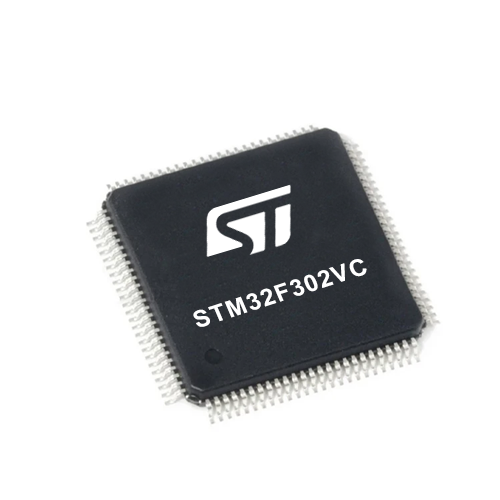
Architecture
ARM Cortex-M4
MCU Memory (KB)
256
Silicon Vendor
STMicroelectronics
Pin count
100
RAM (Bytes)
40960
Used MCU Pins
mikroBUS™ mapper
Take a closer look
Click board™ Schematic

Step by step
Project assembly
Track your results in real time
Application Output
1. Application Output - In Debug mode, the 'Application Output' window enables real-time data monitoring, offering direct insight into execution results. Ensure proper data display by configuring the environment correctly using the provided tutorial.

2. UART Terminal - Use the UART Terminal to monitor data transmission via a USB to UART converter, allowing direct communication between the Click board™ and your development system. Configure the baud rate and other serial settings according to your project's requirements to ensure proper functionality. For step-by-step setup instructions, refer to the provided tutorial.

3. Plot Output - The Plot feature offers a powerful way to visualize real-time sensor data, enabling trend analysis, debugging, and comparison of multiple data points. To set it up correctly, follow the provided tutorial, which includes a step-by-step example of using the Plot feature to display Click board™ readings. To use the Plot feature in your code, use the function: plot(*insert_graph_name*, variable_name);. This is a general format, and it is up to the user to replace 'insert_graph_name' with the actual graph name and 'variable_name' with the parameter to be displayed.

Software Support
Library Description
This library contains API for RTC 6 Click driver.
Key functions:
rtc6_battery_enable- This function enables automatic switch to battery on VCC failurertc6_get_gmt_time- This function gets current GMT time and sets it in the RTCrtc6_get_local_time- This function calculates current local time
Open Source
Code example
The complete application code and a ready-to-use project are available through the NECTO Studio Package Manager for direct installation in the NECTO Studio. The application code can also be found on the MIKROE GitHub account.
/*!
* \file
* \brief Rtc2 Click example
*
* # Description
* This application give time and date information.
*
* The demo application is composed of two sections :
*
* ## Application Init
* Initialization driver enable's - I2C,set start time and date, enable counting and start write log.
*
* ## Application Task
* This is a example which demonstrates the use of RTC 2 Click board.
* RTC 2 Click communicates with register via I2C by write to register and read from register,
* set time and date, get time and date, enable and disable counting
* and set frequency by write configuration register.
* Results are being sent to the Usart Terminal where you can track their changes.
* All data logs write on usb uart changes for every 1 sec.
*
* *note:*
* Additional Functions :
*
* - void displayDayOfTheWeek( uint8_t dayOfTheWeek ) - Write day of the week log on USART terminal.
* - void displayLogUart( uint8_t value ) - Write the value ( time or date ) of a two-digit number.
*
* \author MikroE Team
*
*/
// ------------------------------------------------------------------- INCLUDES
#include "board.h"
#include "log.h"
#include "rtc2.h"
// ------------------------------------------------------------------ VARIABLES
static rtc2_t rtc2;
static log_t logger;
static rtc2_data_t date;
uint8_t time_hours;
uint8_t time_minutes;
uint8_t time_seconds;
uint8_t day_of_the_week;
uint8_t date_day;
uint8_t date_month;
uint16_t date_year;
uint8_t time_seconds_new = 0;
void display_day_of_the_week ( uint8_t day_of_the_week )
{
if ( day_of_the_week == 1 )
{
log_printf( &logger, " Monday " );
}
if ( day_of_the_week == 2 )
{
log_printf( &logger, " Tuesday " );
}
if ( day_of_the_week == 3 )
{
log_printf( &logger, " Wednesday " );
}
if ( day_of_the_week == 4 )
{
log_printf( &logger, " Thursday " );
}
if ( day_of_the_week == 5 )
{
log_printf( &logger, " Friday " );
}
if ( day_of_the_week == 6 )
{
log_printf( &logger, " Saturday " );
}
if ( day_of_the_week == 7 )
{
log_printf( &logger, " Sunday " );
}
}
void display_log_uart ( uint8_t value )
{
log_printf( &logger,"%u", ( uint16_t )( value / 10 ) );
log_printf( &logger,"%u", ( uint16_t )( value % 10 ) );
}
void application_init ( void )
{
log_cfg_t log_cfg;
rtc2_cfg_t cfg;
date.day_of_the_week = 1;
date.date_day = 31;
date.date_month = 12;
date.date_year = 2018;
/**
* Logger initialization.
* Default baud rate: 115200
* Default log level: LOG_LEVEL_DEBUG
* @note If USB_UART_RX and USB_UART_TX
* are defined as HAL_PIN_NC, you will
* need to define them manually for log to work.
* See @b LOG_MAP_USB_UART macro definition for detailed explanation.
*/
LOG_MAP_USB_UART( log_cfg );
log_init( &logger, &log_cfg );
log_info( &logger, "---- Application Init ----" );
// Click initialization.
rtc2_cfg_setup( &cfg );
RTC2_MAP_MIKROBUS( cfg, MIKROBUS_1 );
rtc2_init( &rtc2, &cfg );
rtc2_set_time( &rtc2, 23, 59, 50 );
rtc2_set_date( &rtc2, &date );
rtc2_enable_counting( &rtc2 );
}
void application_task ( void )
{
rtc2_get_time( &rtc2, &time_hours, &time_minutes, &time_seconds );
rtc2_get_date( &rtc2, &date );
if ( time_seconds_new != time_seconds )
{
log_printf( &logger, " Time : " );
display_log_uart( time_hours );
log_printf( &logger, ":" );
display_log_uart( time_minutes );
log_printf( &logger, ":" );
display_log_uart( time_seconds );
log_printf( &logger, "" );
display_day_of_the_week( date.day_of_the_week );
log_printf( &logger, " Date: " );
display_log_uart( date.date_day );
log_printf( &logger, "." );
display_log_uart( date.date_month );
log_printf( &logger, "." );
log_printf( &logger, "20" );
display_log_uart( date.date_year );
log_printf( &logger, ".\r\n" );
log_printf( &logger, "-------------------\r\n" );
time_seconds_new = time_seconds;
}
}
int main ( void )
{
/* Do not remove this line or clock might not be set correctly. */
#ifdef PREINIT_SUPPORTED
preinit();
#endif
application_init( );
for ( ; ; )
{
application_task( );
}
return 0;
}
// ------------------------------------------------------------------------ END
Additional Support
Resources
Category:RTC
